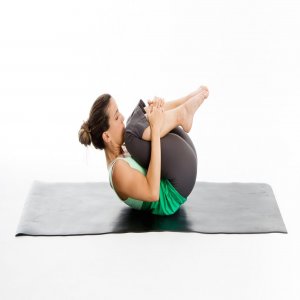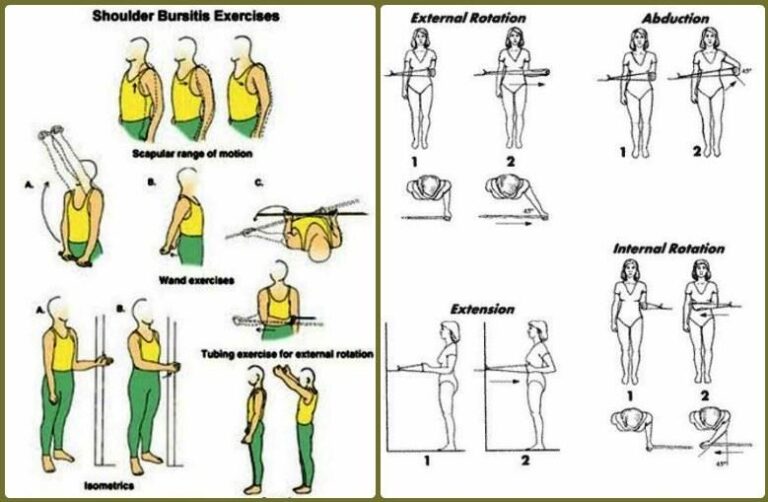52 Best Exercises for Huge Arms
Introduction
Having big, strong arms is a desire for many people because your arms are one of the most noticeable muscular areas on your body. While there isn’t a magic exercise that will instantly give you gigantic arms, a few can.
The biceps and triceps are the two major muscular groups in your arms. The muscles on the front and rear of your arms are referred to as biceps and triceps, respectively. You should concentrate on activities that work both of these muscle groups if you want to develop enormous arms.
Focusing on the biceps in the front and the triceps in the rear can help you build muscle in your arms. Since they have opposing working muscle groups, they mandate different strength training exercises
You may feel more confident if you have larger, stronger arms. Strong and forceful arms can also be expressed via cut arms. But having stronger arms has some important practical positive vibes as well.
Stronger arms create positive vibes easier to conduct any upper-body task, such as lifting children or lifting large groceries. More muscle mass can enhance your metabolism, which means your body will burn more calories even when the person not exercising, in addition to improving your daily functional fitness.
minimize your risk of injury while increasing muscle strength, endurance, and tone
How big of arms should you have?
Two reliable sources can be used to determine the appropriate biceps size. The attractiveness of biceps demonstrates that at least when gaining muscle organically, the more muscle you have, the better you’ll look.
Therefore, the greatest technique to make your arms look better is to just build them as big as you can. Your genetic potential will be reached at some point. Your optimal arm size is that. The average natural lifter can only go to 15–18 inches. Guys beginning out leaner may reach a maximum height of 14 to 17 inches.
To put things in a slightly different light, consider that your waist should be slender. So to initiate measure the size of the waist when the person is at eight to fifteen percent body fat. it would perhaps be in the relative of 28 to 34 inches. if in doubt, the person should utilize 31 inches as the default
The perfect arm length The circumference of the waist is less than 0.5, the ideal biceps circumference and optimum forearm circumference is 0.8 of the biceps.
But keep in mind that above mentioned are just approx measure. Feel free to round up or down to ten percent. Here are the optimum proportions for a man with a 31-inch waist at twelve percent body fat with that little bit of space:
- Size of waist: 31 inches
- Size of biceps: 14 to 17 inches
- Size of forearm: 11 to 13.5 inches
These ratios also roughly correspond to the amount of muscle that a slim man might expect to naturally develop.
The positive aspect is that, for even naturally slim guys, these proportions are frequently reasonably attainable. No matter how slender your arms are at the moment, you can still fill out a t-shirt’s sleeves. And not simply the sleeves of a t-shirt with a slim fit. even those box-cut ones that swing like a tent across your waist.
How much time does it take to develop larger arms?
For every ten kg gained, our members can typically lengthen their arms by 1 inch. An acceptable generalization is to gain about a kg per week during bulking, however various people bulk at different rates. You can tell if you lengthen your arms by an inch. The sweet spot where other people begin to comment is usually two inches.So it will require you about 5 to 6 months to get 2 inches on your arms.
It’s a lengthier route if, you’re attempting to make the switch from 10-inch to 16-inch arms. You may need to carry a few expands to get there. Your freshman gains will come to a standstill. You must move cautiously via the middle badlands. However, you can anticipate your arms to look noticeably more muscular with every 1-2 inches you add.
On the plus side, even slight variations in muscle size can be felt when you’re thin. After your first arm training, you might notice improvements in your arms within a few days. That’s as a result of your training inflaming your muscles. Your body could begin to store more glycogen there. it should not bonafide muscle growth till but looks cool
Why do the arms of thin guys look short?
There are several methods for developing muscle. You can observe a maximalist technique on most bodybuilding websites, where every muscle is worked out using a variety of compound and solo workouts. This strategy is excellent for promoting muscular growth. The issue is that it’s also tricky, exhausting, protracted, and ineffective.
The squat, bench press, deadlift, overhead press, and chin-up are the only basic muscle-building exercises that some people do. The usual basic muscle-building program, such as Starting Strength or StrongLift. These compound workouts are very effective since they train numerous muscles at once. The issue is that some forces continue to fall behind. Those weak muscles frequently in the arms
Let’s observe the triceps and biceps, two of the largest muscles in your arms, to demonstrate what we mean.
Why Biceps Fail to Keep Up
The muscles that flex our arms are known as the biceps. That is accurate. It’s true. The elbow and shoulder joints are where they truly cross. This creates a challenge. Your biceps flex your shoulders and arms as you contract them. the accomplishment of your biceps’ complete range of motion. Your biceps are stretched when your arms are extended behind you.
Your biceps are contracted when your arms are crossed in front of you. Your biceps are being worked in a way that is best for them when you do bicep curls. To curl the weight upward, you are bending the arms and you have a little room to move the elbows forward. Your biceps are extended when you begin and are contracted when you are done, Sweet. Here’s where the issue arises. When performing biceps-targeting compound movements like rows and chin-ups, you pull your elbows back. By flexing your arms, you can lengthen them at the shoulder joint while shortening your biceps. That is not ideal. It only gets worse.
To encourage additional biceps growth, they were executed with an underhand grip that should not work. The movement at the shoulder joint is a contributing factor in the issue with rows for biceps growth. The fact that your biceps are not the limiting element, however, is another issue. You won’t be pushing your biceps near enough to fail when you conduct rows because your back will give out before your biceps do.
Remember that overall, rows continue to promote more muscular growth. They work wonders for developing upper back muscles. The problem is that if you don’t include a lot of biceps curls in your routine, your upper back will develop far more quickly than your biceps. You’ll drop in the arms.
Why Triceps Fail to Keep Up
Your triceps and biceps are related muscles. They can also draw the elbows back, but they work best when extending your arms. Therefore, when you consider triceps exercises, you should consider motions that stretch both your elbows and shoulders, such as:
The issue is that during the majority of complex lifts, we flex at the shoulder joint, which prevents us from contracting our triceps. Think of a bench press or push-up. In both of those exercises, we flex our shoulders while extending our elbows. Our triceps are being lengthened at one end while being contracted at the other.
A larger chest can be developed using the bench press. It wonderfully complements how your pecs work. It is a preferred lift. The problem is that your chest will grow considerably faster than your triceps if you don’t do a lot of skull crushers. You’ll swing in the arms. But what shocked thing how much the bench press improved when increased the number of skull crushers all over throughout the workouts.
The Principles of Arm Training
The specificity is the initial guiding principle. The exercises that operate the best for gaining arm mass are shoulder presses, biceps curls, triceps extensions, lateral raises, wrist curls, and others. However, we also need to be sure that we’re performing those workouts in a manner that will encourage muscular growth.
There is a lot of terminology used in the area of weight training. The terms “bodybuilding” and “strength training” can both be used to describe the process of lifting weights to develop bigger, stronger muscles. But the phrases start to vary as you learn more about lifting culture. The purpose of strength training, which has its roots in the powerlifting competition, is to enhance 1-rep strength on the bench press, squat, and deadlift. Bodybuilding is a sport that has its roots in bodybuilding and is created to aid in stage posing competition success. It involves creating a broader quad motion, selecting the ideal Speedo, and applying the appropriate orange skin color that best watches off the gluteal striations.
Training for hypertrophy is the discipline in which we are most interested. It stands for “muscle growth” exercise. It is a form of exercise intended to aid in the development of larger, stronger muscles. You should develop a stronger bench, deadlift, and squat like a powerlifter. However, you will also improve at several other movements, such as the chin-up and biceps curl. Additionally, your maximum strength will improve. However, you will also grow stronger by performing sets of eight, twelve, and Fifteen. Furthermore, although you won’t be required to wear one, you will look awesome in a Swimsuit.
Here is a sample workout schedule for growth training:
Pick effective exercises: It’s better to base your entire training regimen on compound lifts. But if you want to create bigger arms particularly, you should also do arm isolation workouts like biceps curls, triceps extensions, and forearm curls.
Use a wide range of motion because the muscles grow significantly more quickly when they are challenged at lengthy muscle lengths. For the arms, incline curls for the biceps, overhead extensions for the triceps, and seated forearm curls for the forearms are the workouts with the widest range of motion. workouts that promote contraction, like spider curls and resistance band workouts, can also be dropped.
Do enough sets each week: The majority of research indicates that performing between 9 and 18 sets per muscle each week is good for muscular growth. This could entail performing 5 to 9 sets of compound lifts and 4 to 9 sets of each arm isolation exercise per week.
Make sure to perform enough repetitions every set: while any number of reps between 4 and 40 will help you build muscle, 6 to 20 tends to help you do it more quickly. This is especially true for arm isolation exercises when performing 8–15 repetitions per set is frequently the safest and simplest option.
Train frequently enough: We should exercise our muscles 2-4 times a week to maximize our rate of muscle growth. Perhaps you might try forearm curls, tricep extensions, and bicep curls every Monday and Friday
Train hard enough: on most sets, we should be bringing our sets within 0–3 reps of failure to ensure that we are testing our muscles. Feel free to push arm isolation exercises closer or to failure as they are generally safe and unlikely to result in significant overall tiredness. you don’t need to set personal records every time you work out, but we should constantly aim to add weight to the bar or squeeze out a few more reps.
Select workouts that target your muscles in a manner appropriate to their intended use. Pulling motions, work wonders for your back but less so for your biceps. Curling motions better use the capabilities of your biceps. They thereby promote the growth of the biceps about twice as much.
Select workouts that enable you to push your muscles to their limit of failure. Curls for your biceps are great for pushing your muscles to the limit, but they won’t work as well for your back. Curls are therefore excellent for your biceps but not so wonderful for your back.
Select workouts based on the structure of your bones. It’s your muscles that need to be worked, not your tendons and joints. It is best to use a different biceps workout if barbell curls create pain in your elbows, wrists, or forearm tendon. Curls with dumbbells provide unrestricted wrist and elbow mobility, which frequently resolves the issue.
Exercises that test your muscles at longer muscle lengths should be your main focus. Training your muscles at greater muscle lengths can encourage additional muscular growth, particularly if you can stretch them at the bottom of the lift. Because they stretch the biceps, incline curls are a particularly effective biceps exercise. Conversely, spider curls are a bad workout. They shorten your biceps, after all.
These are only suggestions, not strict guidelines. Many people just use compound pressing and pulling movements to develop large arms. Those workouts aren’t perfect, but they frequently suffice. So have a bowl of rice and enjoy everything. To advance, you don’t have to be flawless. If you work out at home without the use of weights, you may have to depend on push-ups and chin-ups to build muscle in your arms.
Following are the Best Exercises for Huge arms
Focus curl
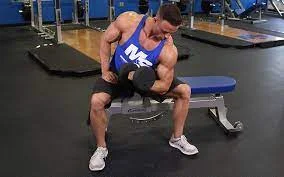
The concentration curl was the one that most effectively activated the muscles.
It isolates the biceps more than any other exercise, making it the most efficient bicep workout.
The concentration curl isolates the arm flexors while isolating the lateral head of the biceps for optimal performance.
How to perform a focus curl: set the legs out in a V shape and sit at the end of a flat bench.
Lean a little forward and hold a dumbbell in one hand.
Place your elbow against the inside of your thigh with your palm toward your center.
For support, set the other hand or elbow on the contralateral thigh.
Curl the weight gradually in the direction of the shoulder without moving your upper body.
Twist the wrist just a little bit as you raise to finish the curl with your palm facing your shoulder.
Permit yourself to feel the tension in your bicep for a moment, and then gradually drop the weight. However, wait to rest it on the ground until after your final repeat.
After 12 to 15 repetitions, change arms.
Band standing concentration curl
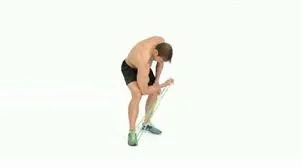
The band is employed in place of a dumbbell in the well-known biceps-focused exercise known as the band standing concentration curl. It allows you to focus on only one bicep at once and give your all during the most intense contractions. Band concentration curls are frequently executed for moderate to high reps, ranging from 8 to 12 reps each set, as part of an upper-body or arm-focused workout.
Advantages: improve biceps size and strength.
limits mobility to exclude assistance from other muscle groups and concentrate primarily on the biceps
Fantastic for creating a strong biceps peak.
The band gets more anxious with each rendition.
How to conduct band standing concentration: With a dumbbell in the working hand, lean forward. Allow the working arm’s elbow to point outward and hang perpendicular to the floor. This is where you’ll start.
Bend the elbow while holding the upper arm still to curl the weight. At the end of each repetition, relax and flex your biceps.
Put lower the dumbbell back to its starting position.
Perform the exercise the specified number of times.
Because your legs do not support the back of your arm, greater effort must be made to keep it from moving. Because it is more challenging, this type of exercise is not advised for people with lower back issues. As a result, you will kneel, and the weight of the barbell will help hold you upright.
Cable curl

There are several methods for performing cable curls. the person should use a low pulley device attached to a handle-equipped cable. If you should securely attach one end of a resistance band to a heavy object, you should also utilize that instead.
For a one-arm cable curl while standing: Stand a few feet away from the pulley system and place your palm on the cable handle. looking forward and the elbow near the side of the body
To improve the balance, put the foot that is against your curling hand a little in front of the other foot.
Obtain the palm of your hand up toward your shoulder as you gradually curl your arm.
Feel the strain in your bicep as you briefly maintain the curl-up position.
Bring the handle back to its initial position gradually.
Conduct 12 to 15 reps before switching arms.
Seated close-grip Concentration barbell curl
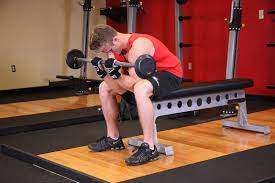
Sit on a flat bench with a barbell or E-Z Bar in front of you, between your legs. Your legs should be spread broad, knees bent, and soles of the feet flat on the floor.
The backs of the inner thighs should be roughly three and a half inches from the front of the knees as you position the upper arms to grasp the barbell. A supinated grip that is closer than shoulder width is necessary for this kind of workout. Your arm should be fully extended, and the barbell should be raised over the floor. This is where you’ll start.
Exhale while curling the weights forward while maintaining complete stillness in the upper arms. Just use your forearms, please. Repeat the exercise until your biceps are fully contracted and the dumbbells are at shoulder height. Biceps should be contracted and then tightened for a limited period.
Start bringing the barbell back to its starting position as you take a breath.
Advice: Always avoid swinging.
Repeat as many times as are recommended.
Barbell curl
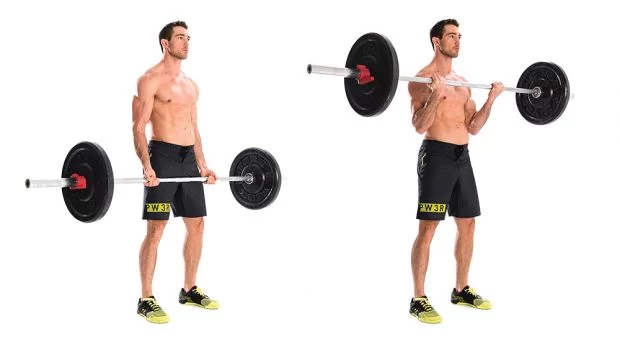
Why: The barbell bicep curl is unquestionably the best arm exercise. You will be able to add more weight to the bar, but use caution and attempt to slow down. You’ll isolate the biceps and get a bigger pump if you maintain the reps clean.
When conducting the traditional biceps workout, it’s important to preserve a straight back and avoid shifting the body far from the arms. You might need to start with a lesser weight at first to allow the biceps to do all the work.
When conducting a barbell curl: the feet should be shoulder-width separated as the person stands.
With the palms facing out, grab the barbell with your arms by your sides.
Curl the barbell gradually toward your chest while exhaling. Just your arms should be used to lift the barbell; keep your chest still.
Hold the position for a brief moment before bringing the barbell back to its initial position.
12 to 15 times, repeat.
Chin up
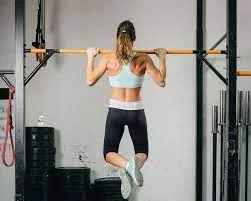
A strong chin-up bar that is elevated enough off the ground so that your feet won’t touch the floor when your arms are outstretched is necessary for the chin-up.
Making a chin-up: Reach both arms up so that the palms are facing you as you stand underneath the chin-up bar. Put both hands on the bar. To get to the bar, you might have to leap or step up.
Hold the bar firmly with your thumbs wrapped around it while you center your body. Crossing your legs may aid in providing extra stability.
Pull your body up by bending your elbows as you slowly exhale.
As you concentrate on allowing your biceps to pull you up to where your chin contacts the bar, keep your elbows in front of you.
After pausing briefly, carefully return to the starting position before doing the action once more.
Standing bicep curls with a dumbbell
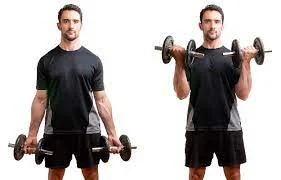
Why: Because it’s a fan favorite, which means it must be at the top of any list of bicep exercises. The curl is the finest biceps exercise. But it’s important to manage your weight properly. Effortlessly swinging and arching your back while lifting the dumbbell is unsafe and ineffective. Keep it cool, in control, and focused on tightening your bicep as you raise.
How to conduct: Hold a dumbbell in each hand while standing with your arms at your sides.
Ensure that your elbows are close to the body and that your hands are facing front.
Breathe out as you raise the weights to shoulder height, tightening your biceps and keeping your arms still.
Hammer curl

Why: It matters how you grip the dumbbell, especially. The brachialis, the muscle that provides your arms their bigger appearance, gets greater effort when the dumbbell is turned on its side.
How to execute hammer curl: Take a pair of dumbbells in both hands and place the palms toward the thighs while letting them hang at arm’s length next to the sides. Bend the elbows and curl the dumbbells as close to the shoulders as you should without shifting your upper arms. After pausing, gradually return the weight to its initial position. Straighten the arms entirely each time you get back to the position from where you started.
Ascending dumbbell curl
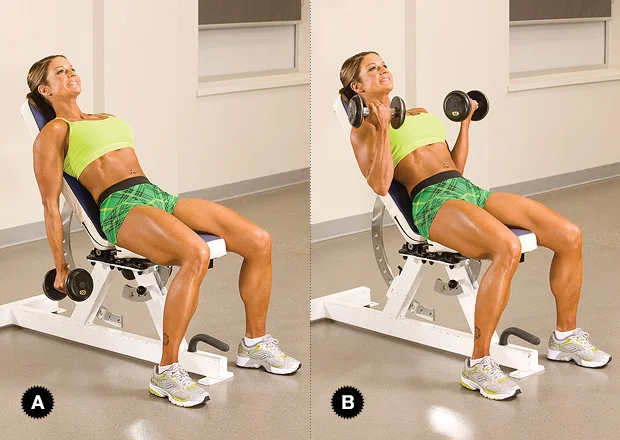
Why: Because you’re starting from a lower position, inclining the bench causes your biceps brachii long head to come under more stress. You are starting from a position where your leverage is less than usual, in other words. Please be advised that as this workout requires more effort, you must lower your load.
The incline dumbbell curl is an exercise for the upper body that works the latissimus dorsi, upper back, and biceps. On an inclined bench, it is simpler to focus on the lower lats precisely. Dumbbell row modifications are often done for moderate to high reps, like 8 to 12 reps per set or more, during the upper body or back component of a workout.
Increasing upper-back size and strength is advantageous.
The incline bench position limits mobility and necessitates a precise approach.
develops the biceps and back of the shoulders
How to conduct it: Keep your grip neutral and lean into an inclined bench.
Begin by holding a dumbbell in each hand with a neutral grip and straight arms. This is where you’ll start.
Pulling back the shoulder blades and flexing the elbows will help you push the dumbbells to your side.
after a short pause at the height of the motion, return to the beginning position.
Twisting dumbbell curls
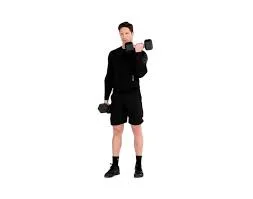
Why: Although your forearms will be used, this exercise won’t put as much strain on your biceps as some others. Squeezing starts over food; this motion will hit more of your arm in less time.
How to carry out: Hold the dumbbells with your palms facing each other, at your sides.
Use your biceps to alternately raise the dumbbells to your shoulders, palms facing your chest the entire time.
systematically lower the weights back to your side, then repeat.
Straight bar with a reverse curl

Why: It is commonly overlooked since it works the brachialis, an arm muscle that is unnoticeable but essential for growing larger biceps. Your bicep peak will rise higher when the brachialis is correctly exercised, giving you more impressive flex and the appearance of having larger arms.
How to carry out: Stand with the feet shoulder-width apart and grasp a barbell with the overhand grip.
Flex your elbows and rotate the barbell up until it is aligned to your shoulders and the hands are facing outward, using only the forearms.
Repeat while gradually bringing it back down.
Chin-up with band assistance
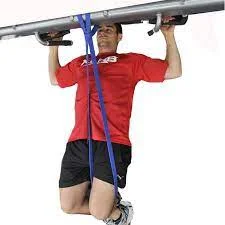
A variation of the pull-up exercise, the band-assisted chin-up is carried out with a band tied across the feet or knees, and the repetitions are attempted with the palms toward the body in a downward position. This results in weight and resistance rising at the top of the repetition while decreasing at the bottom. Similar to other pull-up versions, it tones and strengthens the upper back, biceps, and abdomen. However, it notably stresses the biceps more than the overhand form. Equipment-free pull-ups that simply require a bar and a band
Latissimus dorsi, biceps, the upper back, the core, and the grip muscles are all strengthened.
Reps: can help you accomplish pull-ups at higher repetition levels, such as 8 to 15 per set or more.
Reverse-grip lat pull-downs can be replaced very easily if a machine is not accessible.
From a low starting point, applying resistance bands to the feet will make the exercise more challenging. Do an additional 10 reps after releasing the band from the exercise machine. Complete a total of 20 reps only with the body weight if you don’t have any bands.
Underhand seated row
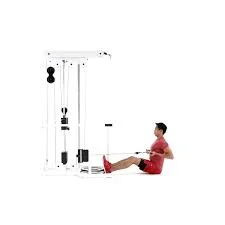
Why: Improve on bodyweight exercises in your attempt for bigger biceps because this doesn’t require a squat station.
The L-sit chin-up is a workout for the back, biceps, core, and overall upper-body strength. It is usually performed with a concentration on strength and form for relatively low reps, including 5-8 reps per set or less because it is believed to be significantly more difficult than standard chin-ups.
Benefits: Regular use of isometric core exercises builds back, biceps, and shoulder strength, allowing for harder pull-up repetitions.
how to carry out: Utilizing an underhand, shoulder-width grip, hang from a pull-up bar. Then, elevate your feet by bending at the hips so that your legs are parallel to your chest. You must precisely contract your abdominal muscles to keep this posture. This is where you’ll start. To bring your chin above the bar, continuously contract your biceps and lats. Release your grip and lower yourself until your arms are fully extended. Repeat once for every rep.5–8 reps
Bent-over row with reverse grip
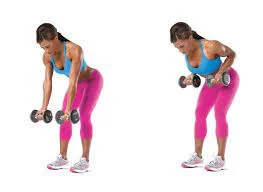
The reverse-grip bent-over row is a mixed exercise for strengthening and growing the lower and upper back. The lats, rhomboids, and lower back are specifically targeted, while almost all of the back muscles are also worked. It is claimed that it targets the biceps and lats in contrast to overhand barbell rows. Since it might be weighted strongly, it is a typical activity in upper-body workouts that promotes strength and muscular growth.
promotes good abdominal bracing, develops the glutes, hamstrings, spinal erectors, and rhomboids, and maintains proper spinal alignment.
How to do it: Hold a barbell in a supinated grip with your hands facing up and stand erect.
To move your body forward, you should bend at the waist and hold the back straight still it is commonly aligned to the floor. the knees must be rhythmically bent
Check to make sure you keep your head straight. The barbell should be straight in front of you, and your body and arms should hang perpendicular to the floor. it is the beginning of the reverse grip bent over a row
Keeping your torso motionless and lifting the barbell as you exhale, keep your elbows tight to your body, and just use your forearms to support the weights. When your back is in the most compressed position, squeeze your muscles and hold for a moment.
Repeat for the specified number of times.
Coach’s Tip: For this workout, use really heavy weights. Fill the bar up, but be careful not to cheat by shifting your weight around in between reps.
Use a heavy weight and perform three to four sets of six to eight repetitions.
Precaution: Avoid doing this workout if you have back problems. Low Pulley Row is a better solution for people who have back issues.
If your back is healthy, take extra care to maintain perfect form and avoid slouching forward as this can also hurt your back, just like with the bent knee deadlift.
When selecting the weight, exercise caution; if in doubt, choose less weight rather than more.
Seated cable rows
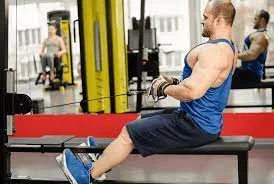
The popular workout known as the “cable seated row” works the muscles of the upper back, including the lats (latissimus dorsi), traps, rhomboids, and rear deltoids. It also sort of targets the biceps. The cable row is effective for a variety of rep ranges, although it should most periodically be utilized in muscle-building exercises or as an added exercise for a strength program
Keeping your muscles tense during the whole exercise, particularly while in the period of greatest contraction, has many advantages.
With a variety of handles and grip sizes, it’s easy to target different parts of the back with drop sets or lift additional weight with lifting straps.
How to complete it: To perform a seated cable row exercise, you must have access to a low pulley row machine with a V-bar. The neutral grip, where the hands and palms face each other, is made possible by the V-bar. Put the feet on either the front platform or the linked crossbar as you sit down on the machine. Be cautious to maintain the knees slightly bent but not locked.
Holding the V-bar handles with your hands while bending over, keep your back straight.
Drawback until your body and legs are at a 90-degree angle while keeping your arms extended. Your back should be slightly arched, and your chest should protrude.
Your lats continue to feel beautifully stretched as you carry the bar in front of you. Here is where the exercise starts. While keeping your body motionless, bring the handles back toward your body and keep your arms close until you reach your abdominals. Breathe out as you carry out that motion. At that moment, you ought to be tensing your back muscles. After holding the contraction for a brief while, slowly return to the beginning position while inhaling. continue for the person’s capacity to conduct
Be careful not to hang from side to side as this could hurt your lower back.
Deviations: You may execute the exercise with either pronated palms facing down-forward or supinated palms facing up-reverse grip using a straight bar in place of a V-Bar.
Forward leaning ez bar curl
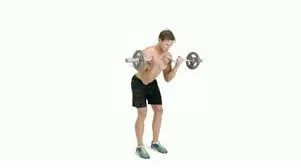
How to conduct: With your underhand and shoulders wide apart, hold the EZ bar in front of your thighs. Lean a little forward until the lower body is at a 30-degree angle with your hips. Roll the bar till the hands are at your shoulders as you inhale. Squeeze the biceps, then slowly and carefully allow go.
Why: By strengthening the primary finger flexor muscle, you’ll develop a vice-like grasp for heavier lifts and, just for kicks, a bone-crushing handshake. Forward turn means utilizing the hips to hang up the end few reps. accurate form for proper achievement
EZ bar curl with a reverse grip
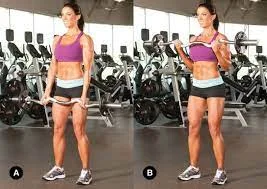
How to conduct: Grab the EZ bar in front of the thighs with an overhand, shoulder-width grip. Curl the bar until the hands are at the shoulders as you breathe. Squeeze the biceps, then slowly and deliberately let go.
Why: Weaknesses in your elbows and forearms can substantially interfere with the growth of your biceps, regardless of how many arm exercises and curls the person performs. This motion corrects it by striking your brachioradialis, a muscle in your forearm.
Prone dumbbell spider curls

Why: Because doing so trains you how to curl correctly. If your chest lifts off, you are lying. If you preserve the chest flat during the individual rep, you will have successfully finished a second set for larger biceps.
How to conduct: Lie on an inclined bench with a dumbbell in each hand hanging below your shoulders.
Using the biceps, curl the dumbbells in the direction of the shoulders. Lightly return to the initial location before repeating.
Incline Hammer Curl
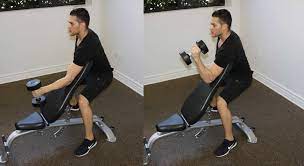
How to conduct: Take a seat on an inclined bench while keeping a dumbbell by each side of the body. Bring the dumbbell to the shoulders while maintaining arm stability and palms pointing inward. Continue by bringing it back to your side.
Why: Because the inclination of the bench allows for a more thorough arm workout that emphasizes the brachialis and the long head of the biceps brachii.
Press-Up Diamond

The biggest region of the tricep needed the highest muscular activity during the triangle push-up. In conclusion, don’t cut corners on these.
How to conduct: Form a diamond shape with your hands while lying on the ground with your torso straight. Your body should be lowered until your chest is nearly parallel to the floor. Squeeze your triceps and chest simultaneously as you press your body back up to the beginning position.
Why: Limiting your grip works your chest and all three heads of the triceps to create an arresting shape.
Javelin Press

How to conduct: Place an EZ bar over the shoulder in your right hand. Push the bar up with your extended arm, then bring it back down to the shoulder and repeat.
Why: By working your triceps unilaterally (one arm at a time), you’ll see even improvements, and the awkward equipment’s counted instability will allow you to engage smaller shoulder muscles that protect the joint from injury. Plus, when compared to the folks carrying dumbbells, you’ll look like an athlete.
extended triceps
Sitting one-arm tricep extension
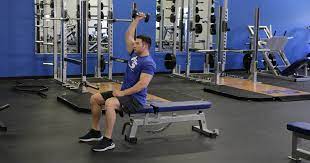
How to conduct: With your elbow bent and pointing up towards the ceiling, grasp a dumbbell in one hand straight behind the head. When your arm is straight and the dumbbell is just above you, extend at your elbow. Continue by lowering your arm back to its initial position.
Why: This exercise strengthens your arms and gives your shoulders and elbows more stability. Aside from that, working singularly will correct any muscle imbalances.
Decline close-Grip EZ Bar Skullcrusher
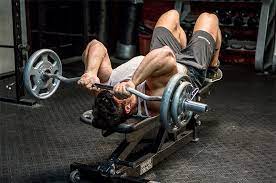
How to conduct: Recline on a bench that is 30 degrees down. With your hands facing your feet, raise your arms straight up while holding the EZ bar in your deepest grips. Lower the bar until it is approximately one inch from your forehead while maintaining the elbows firmly fixed and tucked in. Without locking your elbows, gradually extend your arms back to the beginning position.
Why: Despite what the name might imply, this is one of the best arm workouts for building strong triceps. Your range of motion will improve for greater muscle activation if the bench is set to lower.
Tate Press
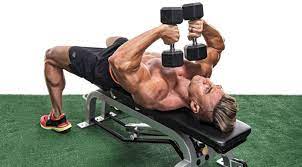
How to conduct: Holding two dumbbells high above your shoulders while lying on a bench is how to do it. Pull the dumbbells to the chest by progressively bending your elbows so that your hands are facing outside and the dumbbells are pointing upward. Repeat by bringing the dumbbells back to their starting position.
Why: Because working at this angle puts more attention on the triceps long head, the muscle division at the back of your arms will be more obvious. Sadly, it’s against the rules to show them in the office while sporting
Standing Overhead Barbell Triceps Extension
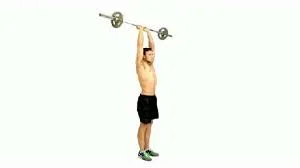
How to conduct: Pick up a barbell and hold it over your head with both hands, palms facing forward almost touching. While maintaining your upper arms still, progressively lower the bar behind your head by bending your elbows. When your elbows are 90 degrees, stop and think then flex your triceps and come back to the beginning position.
Why: Utilizing a barbell overhead offers you a grasping benefit compared to utilizing dumbbells. To stimulate the most muscle fibers, utilize your strength to attempt to crack the barbell at the top of the repetition.
Close-Grip Bench Press
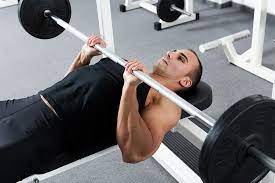
How to conduct: Grasp a barbell above your sternum with your arms completely straight, using an overhand grip that is shoulder-width apart. Straight down, pausing, and then pressing the bar back up to the beginning position is how you should lower the bar.
Why: This triceps exercise targets your chest and core in addition to your triceps. The triceps muscles have to work harder when your hands are closer together, which promotes new growth and increased strength.
gym, weightlifting machine, exercise equipment, standing, physical conditioning, joint, muscle
Advanced Tricep Dips
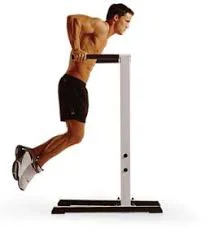
How to conduct: Raise your torso similar to the ground and hoist yourself up on parallel bars. Once your shoulder joints are below your elbows, steadily lower your body by bending your legs. Until the elbows are almost straight but not locked, push back up. Avoid this maneuver if you are having shoulder problems.
Why: Using all of your body weight as force means the triceps have to work against a tougher pressure than they must if the person were just individually the tri’s
Pulldowns of rope
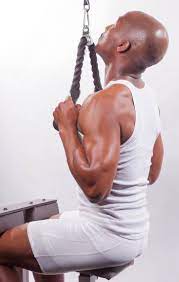
How to conduct: Fasten a rope handle to a cable station’s tall pulley. Maintaining a tight core, grip the handle while maintaining your elbows curled in at your sides. Pull your hands down until your arms are completely extended, and then come back to the position from which you started. You should just move your forearms.
Why: By limiting your movement to your forearms, you will make the triceps do the bulk of the effort.
Triceps Kickbacks
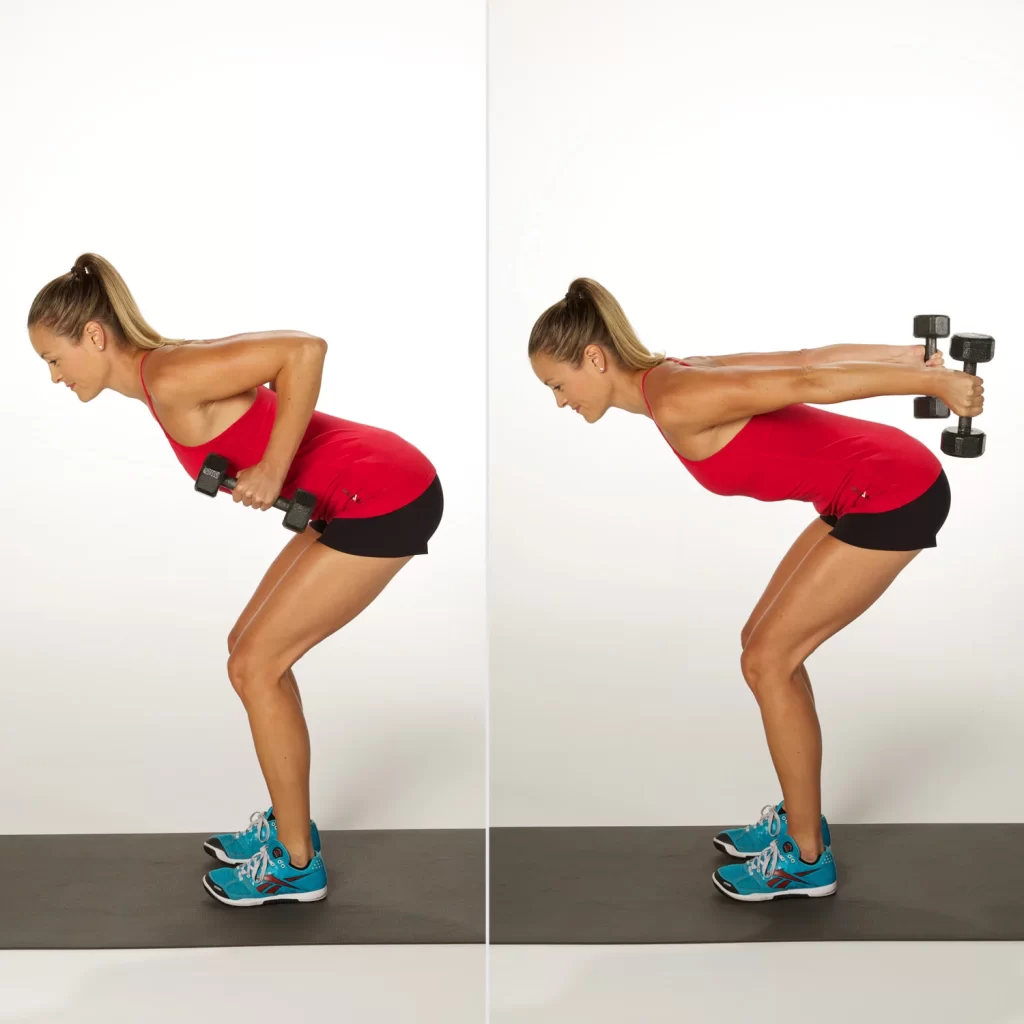
How to conduct: Starting from a standing position, bend at the hips, pushing your hips behind your heels while maintaining a flat back, and pinning your elbows to your waist. Arms should be extended behind you in a straight line while keeping the elbows still. For a beat, tighten your triceps. Slowly resist the come of the dumbbells back h their original location, neglect force, no cheat in the sets
Why: Tricep kickbacks are an underappreciated dumbbell exercise when done correctly. To isolate your triceps, it’s critical to concentrate on greater rep ranges, moderate weight selections, and perfect form. This will assist you in working harder to achieve a tricep pump that pops t-shirts.
Straight Barbell Wrist Curl with Palms Up

How to conduct: Place your hands up while holding a barbell while seated on a bench. As you drop the bar toward the floor, rest your forearms on your knees. Wrist curl upward, pause, and then gradually descend.
Why: Take proper care of your forearms since they will be visible long after your beach body has returned to hide. Come deadlift day, the grip you have will also be significantly stronger
Straight Barbell Wrist Curl Palms Down
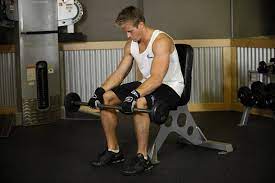
How to conduct: Place your palms on the bottom of a barbell while seated on a bench. As you drop the bar toward the floor, rest your forearms on your knees. Wrist curl upward, pause, and then gradually descend.
Why: Don’t ignore this delicate maneuver just because it’s not one for showboating. In other movements, it minimizes wrist and elbow injuries by focusing on the extensor muscles.
Decline the hammer curl with dumbbells
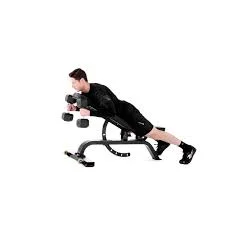
How to execute: Lay down on a bench that has been inclined at a 45-degree angle. Bend your elbows and curl the dumbbells as close to your shoulders as you can without moving your upper arms. After stopping, rhythmically back the weight to its normal location. Every time come back to the original place, totally straighten the arms
One arm Dumbbell Curl Over Inclined Bench
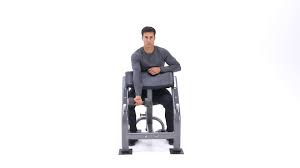
The single-dumbbell preacher curl exercise targets the biceps and in particular the bicep peak. As a component of upper body or arm training, most people will perform this exercise moderately with moderate to high sets. enlarges the biceps peak
The preacher’s bench’s excellent technique ensures the biceps work harder.
When working on one arm at a time, one side cannot be made up for the other.
Execution: Place a dumbbell in your right hand and place your upper arm on the preacher bench or the incline bench. It is appropriate to hold the dumbbell at shoulder level. You will begin with this.
As you inhale, gradually lower the weight until your upper arm is extended and your biceps are completely stretched.
As you exhale, use your biceps to curl the weight up until the dumbbell is at shoulder level and they are completely gripped. Remember once again that you must elevate that little finger above the thumb to ensure full contraction.
Give the biceps a vigorous second of contraction, then repeat for the appropriate amount of time.
The motion is repeated while the arms are changed.
Alternatives: Rather than employing a dumbbell, the person should execute this workout with a low pulley. You should set the seat in front of the pulley in this condition
Swinging the sledgehammer

One exercise that works the abs and many other muscles is the sledgehammer swing. The sledgehammer is dropped from above and strikes a tire, which cushions the blow and raises the hammer back up. It can be done as a part of a functional fitness or athleticism-focused workout for time or repetitions.
For this activity, you require a tire and a sledgehammer. Take an uneven posture in front of the tire, about two feet distant. Hold onto the sledgehammer.
If you are right-handed, your right hand should be choking up closer to the head and your left hand should be near the bottom of the handle. Your right hand slips toward the head as you raise the stick, and it will join your left hand as you swing downward. Apply as much force as you can on the tire to force it down. Regulate how the hammer bounces off the tire.
Continue on the opposite side.
Inclined dumbbell hammer curls
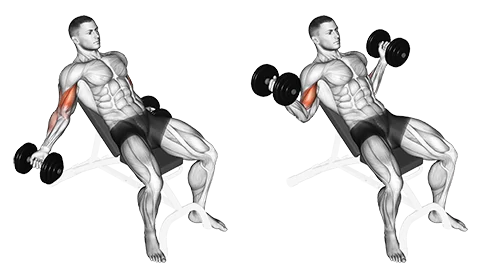
The dumbbell preacher curl exercise targets the biceps and more specifically the bicep peak. A preacher bench and a few dumbbells are all you need. It is often performed for a variety of moderate to high repetitions as part of an upper-body or arms-focused workout.
How to do it: While carrying a dumbbell in each hand, place the upper arms on top of the preacher’s bench or incline bench. It is appropriate to hold the dumbbell at shoulder level. This is where you’ll start.
As you take a breath, slowly lower the weights until the upper arm is extended and your biceps are completely stretched.
As you breathe out utilize your biceps to curl the dumbbells up until your biceps are contracted and the weights are at shoulder level
Do the suggested number of sets after giving the biceps a strong second contraction
Prone barbell curl
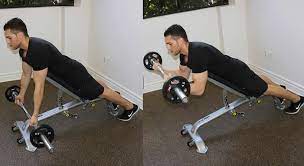
The EZ-bar spider curl is a biceps-targeting exercise that is performed face down on either the flat side of a preacher bench or an incline bench. The EZ-bar allows for a more comfortable wrist position, and the angle isolates the biceps while decreasing the activation of the shoulder muscles. Ez bar spider curl for 8 to 10 repetitions.
How to conduct: Place the bar first on the part of the preacher bench that you would normally sit on. Make sure to line up the barbell properly to make sure it is balanced and won’t slip off. The front side of the preacher’s bench, where the preacher’s arms frequently rest, should be pressed firmly against your body. Get over here by the preacher’s bench.
Make sure your feet are firmly planted on the ground and place your upper arms on top of the preacher bench’s interior pad.
Take a supinated grip on the barbell with your palms up and your arms at least shoulder-width apart from one another.
Exhale as you begin to raise the barbell slowly. Keep the biceps contracted for a brief period while applying pressure.
As you exhale, gradually begin bringing the barbell back to the starting position.
Practice ez bar spider curls for 8 to 10 repetitions.
Another alternative for performing this exercise is with dumbbells.
Just make sure you position the dumbbells appropriately on the preacher bench area where you would normally sit.
Face-down incline dumbbell biceps curl
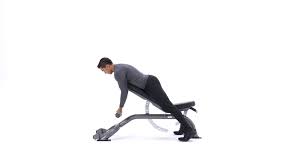
The face-down incline dumbbell biceps curl is a biceps-targeting exercise done on an inclined bench. You may isolate your biceps while using fewer shoulder muscles if you set up a vertical arm angle. This curl variation is often performed for moderate to high repetitions, such as 8-12 reps per set or more, as part of upper-body or arm-focused conditioning.
how to carry out: Your shoulders should be near the top of the incline when you lay face down on an inclined bench. In each hand, hold a dumbbell. Crossing your legs to the side or placing your knees on the seat are options.
Observe how your arms naturally extend and hang in front of you.
Keep your elbows at your sides while facing forward with your hands turned up. This is where you’ll start.
Lifting the weights until your arms are fully stretched requires a biceps contraction. Breathe out while making sure that only your forearms are moving throughout this portion of the workout. The upper arms should remain motionless at all times.
move down the dumbbells until your arms are fully extended.
Repeat as often as required.
Fingertip pushups

Why it works: Because it’s a push-up, your arms, shoulders, chest, and back will get a good workout. Additionally, you are improving your grasp and hands because you are on your fingertips.
How to perform it: Begin in the standard push-up posture, then raise your palms so that only the tips of your fingers touch the ground. Do as many repetitions as you can in a row, switching to your knees if necessary to maintain proper form, Aim for three sets of ten reps each.
Chin up and L-sit
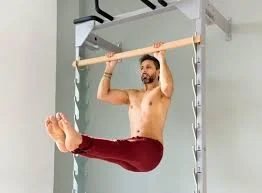
The L-sit chin-up is an exercise that works the back, biceps, core, and upper body strength as a whole. Since it’s considered to be harder than regular chin-ups, it’s usually done for very few numbers, like 5-8 reps per set or less, with an emphasis on form and strength.
benefits: intense isometric core training builds shoulder, bicep, and back strength, which correlates to harder pull-up repetitions
How to conduct: Utilizing an underhand, shoulder-width grip, hanging from a pull-up bar. Bend at the hips to lift your feet so that your legs are parallel to your chest. You need to precisely tighten your abdominal muscles to maintain this posture. Here’s where you take the lead. Tighten your biceps and lats continuously to drag the chin beyond the bar, then let go to descend yourself to the limit full arm extended. per rep do for 7 to 9 reps
Bicep curls with bands
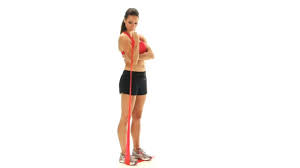
Why: To have bulging biceps, all you need is a resistance band. If your band is light, increase the rep ranges until you experience an arm pump that strains your T-shirt.
how to conduct: stand tall with your arms straight and grasp the resistance band with an underhand grip. Slide the band under your feet.
With your elbows firmly locked to your waist, curl your arms upward so that your thumbs are in contact with your collarbones.
To return the band to its starting position, progressively reverse the action.
A farmer’s carry
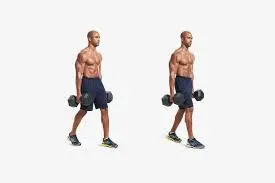
For most people, the farmer’s walk is a suitable type of exercise and is fairly easy to execute.
When first attempting the exercise, it’s ideal to begin with smaller weights and work your way up to a more difficult load.
The farmer’s walk has several variations, but because dumbbells are widely available and simple to utilize, most newcomers opt to utilize them.
You can test with different variations as you get better to increase the difficulty.
You’ll require dumbbells with different weights and a clear path for at least ten straight steps
How to conduct: Dumbbells of the proper weight should be first chosen and placed on the floor on either side of your torso.
Bent at the hips and knees, lower down, and take hold of the dumbbells with both hands. Expand your hips and knees while maintaining a neutral spine to deadlift them up.
With a strong grip, grasp the dumbbells at your side. Maintain a firm core, back, and shoulders as you stand high.
Start the motion by focusing your attention directly ahead of you and moving forward at a steady speed.
To maintain your spine neutral and your core firm, finish the appropriate number of steps and set the dumbbells down.
Once you reach the required number of sets, take a one to three-minute break and repeat.
Even while the original objective isn’t to finish the steps as quickly as possible, your steps will unavoidably become shorter and faster as the weight increases.
Maintaining a neutral, or straight, spine during the farmer’s walk is crucial for safety since it helps prevent injuries.
pinching plates
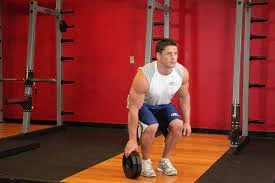
How to conduct: Place two broad-rimmed plates together so that the smooth sides are facing outward.
To hold both plates together, grasp the exterior portion with your fingers and the other side with your thumb. This is where everything begins. Apply pressure to the plate with your thumb and fingers. For as prolong as you can, preserve pinching pilates posture. Continue for the number of sets your program recommends. Change arms and carry on.
Take care not to drop the weighted plate if you try to maintain it for an extended period. It might therefore fall on your feet or other regions, injuring you. Thus, progressively bend your knees while maintaining a straight back, and place the plates on the floor whenever you feel like the weight is ready to come free of your grasp.
Suspension curl TRX
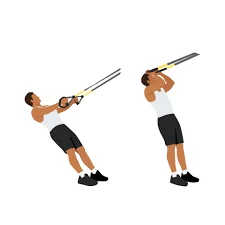
This curl modification will be helpful to anyone who has limited access to free weights, cables, and machines. As with other suspension-based exercises, the exercise’s hardness may also be easily adjusted by changing the body’s position; the more erect you are, the easier the exercise will be.
You are essentially using your body weight as resistance, thus varying the pace of the repetitions can increase the amount of time your biceps are strained.
How to do it: Fasten a TRX suspension to the previous support.
Grab the handles and move in the direction of the anchor point.
Lean back while keeping your hips and shoulders straight and your spine neutral.
Lift your entire body weight.
Coach’s Tip: To boost the difficulty of the exercise, adjust your body position. The further back you tilt during the exercise, the more body weight you oppose. To simplify the exercise, you might posture the body more upright.
conduct three to four sets of repetitions until you reach failure, adjusting your foot position as needed.
Crab walk with a dip

Why it works: you should utilize your triceps to move your body weight during this exercise. When you dip, you will use them once more to perform even more work. The workout also works your core and butt, which is a benefit.
How to do it: Lie down on the ground with your palms facing backward. Start “walking” across the floor by raising your hips as high as you can. Triceps dip after every two strides. 30 seconds of repetition is followed by a 30-second rest. Run three sets.
Skull crushers
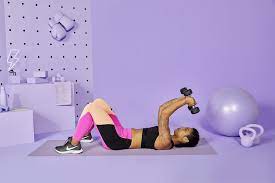
Why it works: Because you have to stabilize your complete body when doing this motion on an exercise ball, it works your arms and core well. Additionally, you can’t move the weights while on the ball with your shoulders or back, so your attention will be mostly on your triceps.
How to execute: Place your feet on the floor, your feet together in a bridge posture, and your upper back on an exercise ball. Straighten your arms and hold a dumbbell in each hand above your chest. Carefully lower the weight toward the head till the forearms are parallel to the floor while bending just at the elbows. Take a break, then restart. Make three sets of 10 to 12 reps
bonus move: this move with pullover equally to kill crushers but the person should circle the elbow back towards the ear for an initial pose versus swinging at the elbow and close grip bench press. Perform a little individual all-in-a row and you must feel that work in next day
Uppercut
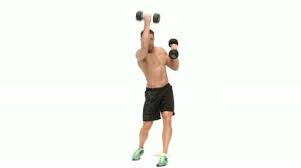
Why it functions: It works your shoulder and arm muscles. For maximum functional strength, he advises training both the arm and shoulder muscles across the shoulder joint. These muscles are linked together after all. Plus, uppercuts are additional enough from curls that they feel like a good sufficient from the difficult routine
Bilateral battle rope waves
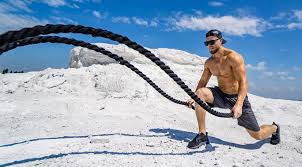
Starting with one rope in each hand, place your feet hip-width apart. There should be a few swings in the ropes.
Obtain your shoulders back, gently bend your knees, and contract your core.
At the same moment, hang both ropes up to slightly below shoulder height, and then hang the ropes back down. It will appear to flow along the ropes like a wave.
Raise the ropes back up right away. Continue doing this without pausing.
Keep moving in this manner for thirty seconds. After a 30-second break, continue the exercise 3-5 times, or on to the next one.
Unilateral battle rope waves
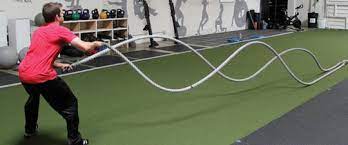
Starting with one rope in each hand, place your feet hip-width apart. There should be a few swings in the ropes.
Get your shoulders back, gently bend your knees, and contract your abdominal muscles.
Using your right hand, sway one rope upwards. Using your left hand, sway the other rope up as you swing it back down. It should be the ropes working in opposition to each other.
Keep moving in this manner for thirty seconds. After a 30-second break, repeat the exercise 3-5 times, or on to the next one.
Alternating broad circles
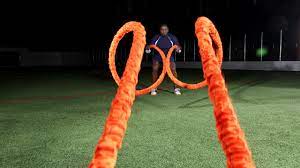
Starting with one rope in each hand, place your feet hip-width apart. There should be a few swings in the ropes.
Get your shoulders back, gently bend your knees, and contract your abdominal muscles.
Turn one rope out to the side in a clockwise direction with your right hand.
Apply the same pressure with your left hand as the rope comes back to its initial position.
For thirty seconds, keep switching hands without pausing. After a 30-second break, repeat the exercise 3-5 times, or on to the next one.
Switch the circles for a different muscle intensity and an added difficulty.
Jumping slams

This move might not be appropriate for everyone due to its increased difficulty and impact. but advanced trainers utilize this workout as a progression stage
How to conduct: Place your feet hip-width apart and begin by grasping a rope at either side of your body. To stretch your legs and leap higher, lower yourself into a squat, contract your core, and press into the balls of your feet. Swing the ropes as high as you can while doing this.
When you land back down, take a soft landing on the balls of your feet and lower yourself into a squat. Slam the ropes into the floor simultaneously.
Spend thirty seconds repeating this motion. After a 30-second break, repeat the exercise 3-5 times, or on to the next one.
Ring dipping
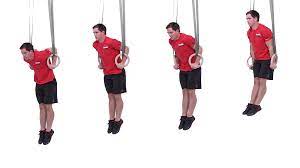
Why it works: To maintain stability in the air, using rings pushes you to shift your entire body weight. You’ll be trembling by rep three, we promise. If you’re having trouble with the ring dip, Horner advises starting with a bench under one leg for a little extra support.
How to do it: Set rings at a level with your armpits. Place your hands on the rings’ inner bottom lip. As you ascend, lean slightly forward while pushing yourself up until your arms are locked. Keep your elbows close to your sides when you stoop down. Your hands should ideally move from where your pant pockets are to armpit height and then back down. Try to get three sessions of 10 to 12 reps, you should generally discover dip bars in the gym.
Medicine Balls slams
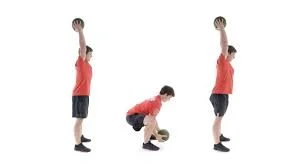
To execute medicine ball slams, all you need is a medicine ball and a small expanse of free space—at least five feet by five feet would be ideal. A slam ball is the safest option available, though you can use almost any kind of medicine ball in most situations.
Slam balls have a little more give and are softer. Because of this, they will not bounce like regular medicine balls do, offering greater tolerance and avoiding injuries that may result from throwing a heavier ball and having it bounce back at you with force.
Begin by taking a tall stance, placing your feet about shoulder-width apart, bending your knees and hips slightly, and grasping a medicine ball with both hands in front of your body. To begin with, ideal posture, engage your core by pulling your abs in toward your spine and rolling your shoulders back.
To burden the spring, slightly bend your knees. Then, exhaling forcefully, push through your heels and rise up onto the balls of your feet. As you stand up, extend your hips and knees to propel your arms upward and raise the medicine ball above your head. Your arms should be expanded to the maximum of the movement, with the ball nearly straight overhead. Instead of bending back so the ball is behind you, maintain a straight-arm position.
As hard as you can, hit the medicine ball between your feet straight down using your arms and abs. To intensify the impact, flex your knees and press your hips back. As you hit the ball down, release the air.
To get the ball off the floor, squat down. Then, launch yourself into the next slam by bringing your hamstrings, glutes, quadriceps, and calves up to full force. As you raise the medicine ball above your head, land back on the balls of your feet.
Proceed for a whole set of slams for a duration of time or several repetitions.
The importance of huge stronger arms
when individuals try to bulk up their arms, they make lots of mistakes one of which is disregarding the significance of progressive overload. You kept in mind the need to become more powerful all around. On the bench press, squat, deadlift, overhead press, and chin-up, the person should steadily grow stronger. and never ignore to emphasize strengthening throughout the arm isolation exercises.
The arms went from being 10 inches long to somewhere between 11.5 and 12 inches by the time and finished putting on the first forty kilograms. the person should quadrupled their strength by this time. and also out sets of chin-ups while wearing a 50 kg belt and benching 225 kilograms for reps. Biceps curls and triceps extensions were also exercises for performing, but they were an afterthought.
There were also some triceps extensions and biceps curls, but these were a last-minute decision. To develop the arms, You had been focusing on compound pushing and pulling workouts. the arms also appeared improved. You had advanced a little.
The catch is that you must tackle your arm workouts with the same enthusiasm as your compound exercises if your objective is to specifically develop larger arms. You must gradually increase the weight or the number of reps you do. Push yourself to improve your curls and extensions as well as your presses and pulls. This entails having a strategy for each workout, noting what you’re lifting, and aiming to outlift your previous effort.
The key elements of the best arm exercises
For muscular growth, you should aim for 40 to 60 repetitions per muscle every workout in sets of 4 to 6.
The recommended number of sets to get to the 40–60 repetition range is 4–6 sets.
Rep range: 6 to 10, The most growth activation has been demonstrated to occur when a workout is completed with a total of 40 to 60 repetitions. Using 5 to 10 repetitions for each set of the exercise will allow you to stay within this range.
For instance, executing four heavy sets of five repetitions followed by four sets of ten repetitions will yield a total of sixty repetitions.
Volume: 75 to 85% of your one repetition maximum (1RM), or the most weight you can lift in a single repetition.
Opposite to what you may have been told, using a lot of volume during arm training has been demonstrated to result in the most muscle growth.
When it comes to maintaining your motivation and preserving your exercise interest, variety is crucial. So on occasion, you can mix up your exercise routines by conducting a day of high repetition, low volume sets. This will assist to mix things up and give your arms the much-needed break they require.
Arm exercise selection: It’s crucial to choose the right exercises when trying to maximize growth. There is no requirement to go fancy. For starting hypertrophy, several of the traditional bicep and triceps exercises are the best. Below, are further details for arm exercise selection.
You must alter your workouts every 6 to 10 weeks, depending on your level of experience. You can prevent a plateau and pure lethargy by doing this.
Training Periodicity: Training one body area every five to seven days had the best effects.
There is no practical need to have more than one arm day per week because compound exercises like the bench press and pull-up will stimulate and build up the volume in your arm muscles. It would be adequate to have just one arm-specific day every two weeks. train for 30 minutes at a time. For the same reason, you should limit your workout to one or two sessions each week, each lasting no more than 30 minutes. The likelihood of suffering an injury increases significantly when you train for more than 30 minutes per session, and the dangers that would harm the ligaments, joints, and tendons, brief, intense workout sessions are the best for building arm mass
As much as you can, train. Make your workouts as intense as you can by picking weights that are as weighty as you can lift. By lifting weights that are too heavy to allow you to fail or be incapable of completing the exercise after five to eight repetitions, you are training to fail, as it is known in the muscle-building community. Add extra weight as your arms get stronger and you discover that the weight you’ve been lifting is getting easier.
Before progressing to greater weights if you are new to weightlifting, you might want to start with lighter weights. initiate with lighter weights and work your way upward. Find a lighter weight that you can manage instead of at least 5 to 8 reps width
Try out various weights until you discover one you can lift multiple times before getting sweaty and feeling like you can’t lift it again. This weight is your train-to-failure weight. You should be lifting additional weight if you can finish 10 or 12 reps without breaking a sweat or experiencing much of a burn. Reduce the weight if you can’t complete five or six reps without giving up. While intense discomfort is a necessary component of gaining muscle mass, you shouldn’t be lifting loads that make you feel as though you’re going to throw up or faint. It’s acceptable to begin at a lower weight. Once you begin lifting a weight that you can manage, you’ll soon develop the strength needed to raise bigger weights.
Exercise at low intensity and large volume. Exercises should be performed with a lighter weight and more repetitions rather than the most weight you are capable of handling for a few repetitions. Bodybuilders employ high-volume workouts to rapidly build muscle mass since they are linked to higher muscle growth.
You may perform eight dumbbell curls at 50% of your maximum weight. One rep would be this. Then, in a workout, you may do this five or six times.
Apply the perfect method. By adopting the proper technique when you lift weights, you may maximize the results of your workouts and reduce your risk of injury. Keep the following advice in mind while you lift weights, in addition to lifting the right amount of weight for your level of fitness. Instead of using momentum to shift the weights, lift them slowly. Make sure you can perform each exercise for at least 6 to 8 repetitions. If you are unable to do this many repetitions, your weights may be too heavy.
Best pt advice for developing your Arms
Utilize heavy drop sets: Before switching to a rep-out weight in your arm workouts, Inzani suggests loading up a bar with a weight you can handle for 5 rigorous reps. Squeeze out 8–10 repetitions in each arm with strict unilateral movements (one arm at a time), maintaining the elbows close to the body, your back straight, and your shoulders back. without lowering, this form is necessary should not move the resting arm till the other side finished their reps
Execute Multi-Grip Drop Sets: By alternating between grips that are weaker and stronger, double and single-arm movements, and strong to double-arm grips, overwork the muscles.
Why: The nerve system is activated while switching from double-arm to single-arm movements, which causes a higher “neural” drive and works more arm muscle fibers than standard sets. Using a moderate weight, perform 8 repetitions with each arm, moving between the hammer, cross-body, normal, and reverse grips as you go.
Apply the Zottman Curl: It’s not just about the biceps when trying to develop a huge, thick upper arm; this workout also targets the sometimes neglected elbow flexors. Start by holding a few dumbbells and sitting at the edge of a flat bench with your arms completely extended downward and palms facing ahead. As you normally would, curl; however, keep your palm facing away from your body to avoid using your forearm flexors. If required, bend your wrist backward. Before performing the “eccentric” (downward) part of a reverse dumbbell curl, turn your palms so that they are facing downward at the top. Then slowly drop them. The entire time, keep your elbows pressed to your sides; if they tend to flare out, employ less force. Perform 8–10 repetitions to three sessions in the arm training
Apply chin-ups: Once more, using the proper form is crucial to transforming this gym standard into a powerful weapon in your arsenal for arm-building. To perform a perfect chin-up, grasp the bar with your hands approximately 6 inches apart, and try to contract your lats to lift your chin over the bar. When the contraction reaches its apex, use your biceps to hold it in place while you count to two. Instead of dithering, use the muscles’ inherent elastic potential by exploding up at the bottom of the movement. in the upshot, You manage a couple more reps while increasing the size of your biceps.
Utilize training for blood flow restriction: Training with blood flow restrictions is one method that is quite effective for the arms. You get an incredible pump when you force blood to pool in a muscle by limiting the blood supply to that muscle.
Attempt a triceps and biceps superset. Tighten the knee wraps after placing them high on the arms. The wraps should be snug enough to be uncomfortable but not excruciating. For triceps, you’ll use a rope pushdown, and for biceps, you’ll do standing dumbbell curls.
prevents blood from escaping veins; however, arteries still provide blood to the muscle. By occluding a muscle, you are tricking your body into using big fast-twitch muscle fibers, which will cause tremendous growth. It may sound like some kind of torture. You will be using half of your typical weight during this form of training, which is an additional benefit. While challenging your muscles, this sort of workout will allow your joints to get some rest. and elevate the size of the arms. You run the danger of damage if you suddenly switch to three days per week without gradually increasing your volume.
Turn Up the Volume: It has been demonstrated that volume and muscle growth are directly related. This indicates that you need to increase your volume if you’re performing eight sets of arms once a week and seeing no benefits. For arms, I advise adding extra sets on a different day of the week. Three times a week of arm exercise has proven to be the most effective for growth. A crucial consideration is to gradually increase the volume time.
Make Use of All Angles: Your bicep’s main job is to rotate your wrist and raise your forearm toward your shoulders. The triceps’ main job is to allow the elbow to fully stretch. Although these movements are straightforward, you must make sure to exercise your arms from all directions. You should perform curls on an inclination for your biceps and strive for a complete stretch. The bicep will be hit from a higher angle if you perform a chin-up or use high cable pulleys. The triceps work similarly; executing an overhead tricep extension will activate several muscle heads.
Apply the shock strategy: Your body doesn’t like change; it doesn’t want 20-inch arms, and it will battle you since it costs a lot of metabolic energy to move around with that much muscle. Every few workouts, it’s a good idea to mix in more difficult exercises to stimulate arm growth. The purpose of shocking techniques is to severely overload the muscles. Running the rack, supersets, drop sets, and many other exercises may be just what you need to make your arms grow.
Conclusion
You’ll need to consume a lot of food if you want to grow enormous. Your eating habits account for 80% of the effects you’ll notice in the mirror. Make sure you consume a ton of high-quality protein sources each day in addition to nutrient-dense foods. Keep track of your caloric intake, and if you aren’t gaining at least half a pound every week, increase it by 200–300 calories per day. You will need to put on 10 pounds of additional body weight to increase your arms by one solid inch. If you eat like a schoolgirl, you won’t gain that much weight.
it’s essential to train particularly for muscle size if you want to develop bigger arms as quickly as feasible. To achieve this, combine your complex lifts with 2-3 sets of biceps curls, triceps extensions, and forearm curls. Lift your arms when performing those arm-only workouts. Grab in a moderate rep range like 10 to 12 reps per session and carry those sets within 0 to 1 reps of failure. Generally, execute this workout at least two times per week
FAQs
should an individual obtain biceps in two weeks?
You can’t acquire huge arms fast because building muscle requires time and commitment. However, according to a personal trainer with consistent programming that gradually increases load and intensity, you should start to see changes in your arm strength and size in approximately four weeks.
How should You grow your arms out in seven days?
Execute push-ups. Push-ups are a fantastic workout because they strengthen the arms and engage the muscles in the chest, back, and abs. Place your hands just outside of your shoulders and below your torso to perform a push-up. Your entire body should reach straight back.
Should Someone do daily biceps training?
Develop Your Biceps Every Day for Rapid Growth es, you can stick to your regular exercise program and train your biceps every day. For those who have always had trouble growing their biceps, this works incredibly well.
Is the rest of two days enough for the biceps?
The biceps can be worked more frequently because it’s a smaller muscle. However, this does not imply daily. Take a day or two off in between each biceps session to prevent excessive exercise. Plan regimens that include exercises for the shoulders or back, such as front raises, rows, and chin-ups, on various days.
Is developing biceps difficult?
Gaining progressive overload and overload on its own is a challenging goal for the biceps. To really activate those muscles, you have to change up your arm workouts significantly. Start by changing how you complete biceps curls.
Why someone should not get a bigger arm?
You’ve trained too much. Your muscles expand in between exercises once they have recovered from the previous one; they do not expand as you work out. Before they can develop, they must heal. For both healing and growth to occur, you must, therefore, give yourself ample time between workouts. You are additionally required to maintain a healthy diet.
Are biceps worked by pushups?
You may strengthen the muscles in your upper body, such as the shoulders, biceps, triceps, upper and middle back, and the area on the side of your chest under your upper arm, by performing push-ups.
how should an individual obtain veiny arms?
Vascular arms could be acquired by someone who loses too much body fat through diet and exercise. Engaging in aerobic exercise can aid in the loss of extra body fat. Regular resistance training will assist them in developing the muscle that can accentuate arm veins.
How to bulk up?
Eat more than you need, but don’t overindulge in fat.
take protein between every meal.
Engage in mild cardiovascular exercise per session.
Include nut butter and nuts in your diet.
Execute compound raises above isolations.
To get the most out of your workouts, use carb timings.
Take lots of sleep.
Recognize your limitations.
How frequently should you tone your arms?
The best thing you can do is mix up your arm exercises by doing them two or three times a week. You can use them in upper-body or full-body exercises, or set aside a few sessions a week only for weighted arm exercises.
Is it possible to work the same muscle every day?
Daily repetition of the same exercise regimen can result in excessive strain or pain. Repeatedly using the same muscle groups prevents your muscles from growing and repairing. To allow your body to recuperate, I advise training different muscle groups on different days.
If you work different muscle groups, do you still require rest days?
You can take fewer rest days if you schedule your workouts to work on different muscle groups on different days of the week. However, even in this case, you should set aside at least one or two days per week for rest, or at the very least, active rest or recovery.
Which muscle groups should an individual work out per day?
It’s best to concentrate on one main muscle area per session to maximize growth (chest, legs, or back). Exercises that target two smaller muscular groups (biceps, triceps, hamstrings, calves, abs, and shoulders) can be added to your routine.
Do all muscles need to be trained equally?
To encourage uniform development across the body, an exercise regimen should provide sufficient volume to each of the major muscle groups. The layout of many fitness regimens, particularly those geared toward men, places a strong emphasis on “show muscles,” which are typically thought to be attractive on the shoulders, arms, and chest.
References
- Huge Arms Workout Guide: The Best Exercises for Massive Arms. (2015, January 1). Jacked Factory. https://www.jackedfactory.com/blogs/blog/huge-arms-workout-guide-the-best-exercises-for-massive-arms
- Pts, S. D. A. M. W. N. B. (2023, July 17). How to Build Bigger Arms (For Skinny Guys). Bony to Beastly. https://bonytobeastly.com/how-to-build-bigger-arms/
- Cscs, S. H. P. M. M. (2023, September 14). How to Get Big Arms: 15 Steps (with Pictures) – wikiHow. wikiHow. https://www.wikihow.com/Get-Big-Arms
- Roland, J. (2019, November 25). 8 Best Exercises for Bigger, Stronger Arms. Healthline. https://www.healthline.com/health/exercise-fitness/how-to-get-bigger-arms
- Neudecker, K., & Hicks, R. (2023, May 17). The 22 Best Arm Exercises and Arm Workouts for Pumping Up Your Biceps and Triceps. Men’s Health. https://www.menshealth.com/uk/building-muscle/a754655/16-best-exercises-for-bigger-arms/
- Appleton, C. (2022, September 20). The Ultimate Workout for Bigger Arms | 13 Best Arm Exercises – MYPROTEINTM. MYPROTEINTM. https://www.myprotein.co.in/blog/training/the-ultimate-workout-for-bigger-arms-13-best-arm-exercises/
- Bevilacqua, A. (2020, September 10). How to Get Bigger Arms With 7 Strategies. Muscle & Fitness. https://www.muscleandfitness.com/workouts/workout-tips/7-little-known-hacks-bigger-arms/
- A. C. Shilton( 2020,march 23).Men’s Journal.https://www.mensjournal.com/health-fitness/the-13-best-exercises-for-bigger-arms-w449264




